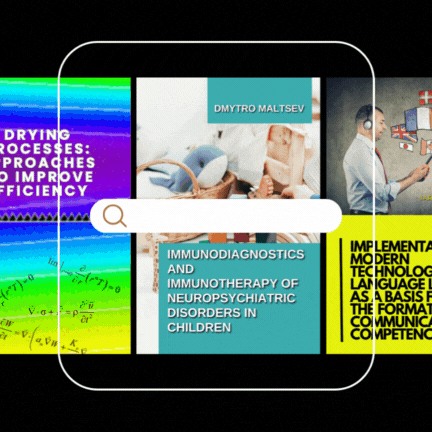Poisson’s ratio influence on thermoelastic stresses distribution in three-dimensional construction elements
DOI:
https://doi.org/10.15587/1729-4061.2012.5558Keywords:
Coupled Thermoelasticity, Poisson’s Ratio, Amplitude-Frequency Characteristics, Dynamic Stresses ConcentrationAbstract
Modern three-dimensional construction elements, which are modeled by finite length cylinders and layers, weakened by through-the-thickness holes of rather different cross-sections, usually work under the influence of great physical and mechanical fields. It leads to a necessity of solving a generalized coupled thermoelasticity problem in the case of finite heat spreading velocity. Using F-solutions method the pointed problem was reduced to well-known systems of one-dimensional singular integral equations of the second order, which was reduced to the system of linear algebraic equations by mechanical quadrature method. Effective numeric schemes and software has been developed and used to solve the problems of thermoelastic coupling influence on frequency-amplitude characteristics of finite cylinders and dynamic stresses concentration in a layer, weakened by through-the–thickness holes. Poisson’s ratio influence on thermoelastic stresses distribution in three-dimensional construction elements was showedReferences
- Даниловская В.И. Температурные напряжения в упругом полупространстве при внезапном нагреве его границы. //Прикладная математика и механика – 1950. – 14, № 3. – С. 316 – 318.
- Коваленко А.Д. Термоупругость. – Киев: Вища школа, 1975. – 216 с.
- Подстригач Я.С., Коляно Ю.М. Обобщенная термомеханика. – Киев: Наукова думка, 1976. – 312 с.
- Грибанов В.Ф., Паничкин Н.Р. Связанные и динамические задачи тер-моупругости. – М.: Машиностроение, 1984. – 184 с.
- Молотов М.В., Киль И.Д. Связанная динамическая задача термоупругости для полупространства // Прикладная математика и механика. – 1996. – № 4 (60). – С. 687 – 696.
- Suh C.S., Burger C.P. Effects of Thermomechanical Coupling and RelaxationTimes on Wave Spectrum in Dynamic Theory of Generalized Thermoelasticity // Trans. ASME. J. Appl. Mech. – 1998. – № 3 (65). – Pp. 605 – 613.
- Пырьев Ю.А. Распространение волн в упругих средах с учетом связанности физико-механических полей. – М.: СИП РИА, 1999. – 206 с.
- Фильштинський Л., Бондар О. Зв’язані термопружні поля в шарі при зосереджених збудженнях (кососиметричний розв’язок) // Машинознавство. – 2004, № 6 (84). – С. 30 – 38.
- Norris A.N., Pholiadis D.M. Thermoelastic Relaxation in Elastic Structures With Application to Thin Plates. // Quart. J. Mech. Appl. Math. 58 (1). – 2005. – Pp. 145-163.
- Фильштинский Л.А., Бондарь А.В. Влияние связанности механических и температурных полей на амплитудно-частотные характеристики цилиндра // Прикладная механика. – 2006. – Т. 42, № 10. – С. 86 – 95.
- A. Bahtui, M.R. Eslami. Coupled Thermoelasticity of of Functionally Graded Cylindrical Shells // Mechanics Research Communications (Elsevier), V. 34. – 2007. – Pp. 1 – 18.
- Фильштинский Л.А., Бондарь А.В. Прочность толстостенных эле-ментов конструкций с учетом термоупругих напряжений // Проблемы машиностроения. – 2008. – Т. 11, № 5 – 6. – С. 60 – 69.
- L. Stainier, M. Ortiz. Study and validation of a variational theory of thermo-mechanical coupling in finite visco-plasticity// International Journal of Solids and Structures. – 2010.– no 47 – Pp. 705–715.
Downloads
Published
How to Cite
Issue
Section
License
Copyright (c) 2014 Александр Вячеславович Бондарь, Наталья Вячеславовна Бондарь

This work is licensed under a Creative Commons Attribution 4.0 International License.
The consolidation and conditions for the transfer of copyright (identification of authorship) is carried out in the License Agreement. In particular, the authors reserve the right to the authorship of their manuscript and transfer the first publication of this work to the journal under the terms of the Creative Commons CC BY license. At the same time, they have the right to conclude on their own additional agreements concerning the non-exclusive distribution of the work in the form in which it was published by this journal, but provided that the link to the first publication of the article in this journal is preserved.
A license agreement is a document in which the author warrants that he/she owns all copyright for the work (manuscript, article, etc.).
The authors, signing the License Agreement with TECHNOLOGY CENTER PC, have all rights to the further use of their work, provided that they link to our edition in which the work was published.
According to the terms of the License Agreement, the Publisher TECHNOLOGY CENTER PC does not take away your copyrights and receives permission from the authors to use and dissemination of the publication through the world's scientific resources (own electronic resources, scientometric databases, repositories, libraries, etc.).
In the absence of a signed License Agreement or in the absence of this agreement of identifiers allowing to identify the identity of the author, the editors have no right to work with the manuscript.
It is important to remember that there is another type of agreement between authors and publishers – when copyright is transferred from the authors to the publisher. In this case, the authors lose ownership of their work and may not use it in any way.









